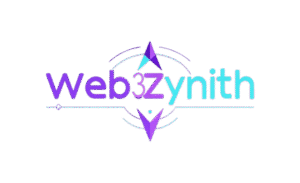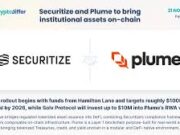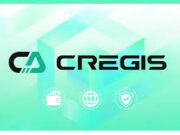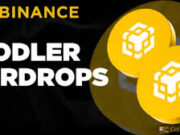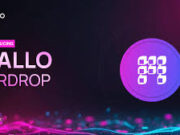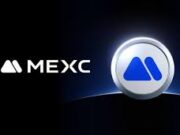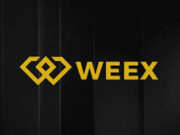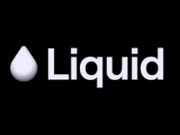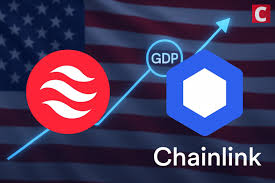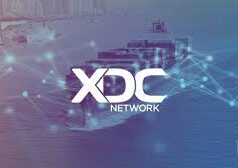The blockchain industry has always promised to bridge the gap between decentralized innovation and real-world utility. However, until now, much of that vision has remained aspirational. That changed with the recent announcement that the U.S. Government-Trusted Data Standard has officially deployed on the Sei Network. This move is not just a technical milestone; it is a turning point that combines the rigor of U.S. government data frameworks with the speed and scalability of decentralized systems.
Therefore, in this post, we will unpack what the U.S. Government-Trusted Data Standard is, why Sei Network was chosen, how this integration works, and ultimately what it means for blockchain adoption globally.
What Is the U.S. Government-Trusted Data Standard?
To begin with, the U.S. Government-Trusted Data Standard is a framework developed to guarantee integrity, security, and interoperability in federal data systems. At its core, this standard focuses on three crucial aspects:
- Verifiable credentials for ensuring data authenticity
- Digital signatures for tamper-proofing records
- Immutable logs for transparent auditing
According to the National Institute of Standards and Technology (NIST), frameworks like this have been essential in safeguarding sensitive information in agencies such as the Department of Defense and the U.S. Treasury. Traditionally, the standard has been applied to centralized databases, but now, by deploying it on a blockchain, its capabilities are significantly expanded.
Consequently, this deployment is not just about adding another blockchain use case. Instead, it represents a shift toward decentralized trust models that can support government compliance, reduce fraud, and streamline bureaucratic processes in areas like procurement, digital identity, and benefits distribution.
Why Sei Network Was the Blockchain of Choice
Next, it is important to understand why the Sei Network was chosen for this integration. Sei is a layer-1 blockchain designed with the Cosmos SDK and powered by Tendermint consensus, focusing on high-speed, low-latency trading and DeFi applications. Unlike many blockchains that struggle with congestion, Sei offers:
- Sub-second transaction finality
- Thousands of transactions per second throughput
- Parallelized execution for efficient smart contracts
Because of these capabilities, Sei provides the reliability and scalability needed to host critical data standards. As Deloitte’s Blockchain in Government report highlights, government adoption of blockchain hinges on performance and security. Sei meets both criteria while remaining eco-friendly through its proof-of-stake mechanism.
Moreover, Sei’s EVM compatibility makes it developer-friendly, ensuring that applications leveraging the U.S. data standard can integrate seamlessly into broader Web3 ecosystems. This makes Sei not only a practical choice but also a strategic one.
How the Integration Works
So, how does the deployment actually function in practice? The integration involves wrapping the U.S. Government-Trusted Data Standard’s verification protocols into Sei-compatible smart contracts. This allows:
- Data attestation on-chain – Agencies or authorized entities can sign and publish data packets under the standard.
- Immutable storage – Once uploaded to Sei, records cannot be altered.
- Automated compliance – Smart contracts enforce regulatory checks against NIST frameworks.
- Selective access – While the data is verifiable by anyone, only authorized entities can decrypt or act on it.
In fact, early pilots are already exploring use cases like real-time auditing of federal databases and fraud detection in benefits distribution. Security has also been prioritized, with third-party audits ensuring alignment with government compliance benchmarks.
Furthermore, technologies such as zero-knowledge proofs are likely being used to balance transparency with privacy. This ensures sensitive government data can be validated without being publicly exposed—an essential factor for regulated environments.
Why This Deployment Is a Big Deal
Because blockchain has often been criticized as speculative or unregulated, the integration of a government-trusted standard on Sei Network is groundbreaking. There are several reasons this matters:
- Legitimacy: Government adoption signals that blockchain has matured beyond hype.
- Efficiency: Decentralized networks cut costs by removing intermediaries.
- Global trade: Supply chains can instantly verify product origins using tamper-proof U.S.-trusted data.
- Financial compliance: KYC/AML processes could be automated without compromising decentralization.
- Sustainability: Proof-of-stake consensus supports government climate goals.
As Cosmos Network resources explain, interoperability is the next frontier in blockchain adoption. With Sei positioned at the heart of this integration, the standard not only gains a decentralized backbone but also enters a broader cross-chain ecosystem.
Future Implications and Opportunities
Looking forward, the deployment could inspire a wave of similar integrations. In the short term, we are likely to see pilot projects across federal systems, with Sei offering dedicated SDKs for developers building government-ready applications.
In the longer term, the convergence of AI, IoT, and blockchain may amplify the standard’s reach. Imagine real-time analytics on decentralized datasets or seamless international compliance frameworks. According to a World Economic Forum study, blockchain could reshape how governments interact with citizens, providing more transparency, accountability, and trust.
For investors and developers, this means that Sei’s governance proposals and roadmap updates will become increasingly important. Features tailored toward government adoption may gain priority, pushing Sei into the spotlight as a trusted global infrastructure provider.
Conclusion: Blockchain Finally Meets Government Trust
In conclusion, the deployment of the U.S. Government-Trusted Data Standard on Sei Network is a historic moment for both blockchain and governance. It proves that decentralized technology can complement, rather than replace, government systems. It also demonstrates that Web3 is not just about speculation—it is about solving real-world problems at scale.
As adoption expands, this move could inspire other governments to follow suit, reinforcing blockchain’s position as the backbone of next-generation data infrastructure. Therefore, whether you are a policymaker, a developer, or an investor, this is a development you should keep on your radar.
Sources:
- NIST Digital Identity Guidelines
- Sei Network Official Documentation
- Cosmos SDK Resources on Government Integrations
- Blockchain in Government Report by Deloitte
- World Economic Forum – Blockchain in Government
